
Fairune Review
Old-school role-playing without the tropes, story...or even the gameplay.
The so-called “roleplaying game” has always been a peculiar moniker. Indeed, all video games involve a kind of roleplay; that’s the point. Whether gunning down demons or chasing gorillas or playing God over a burgeoning civilization, games are all about the fictional roles people perform. More than clever mechanics--even narrative and theme--people play for the experience of being someone else.
Fairune seems to realize this; it takes the basic template and style of a classical, 8-bit RPG and then strips it of all pretense and convention. Epic narrative? There’s barely a story at all. Turn-based fighting? Also removed. Leveling? Just a hollow formality. Magic or stat tracking? All but absent. NPCs? Virtually no one beyond the final boss. Fairune, whether ironically or not, is a game that respects the player’s time. That old-tyme tradition of grinding through slews of mindless enemies for experience points or loot has been thinned to non-existence. All that matters is exploration, discovery, and progress…that other half of the RPG equation.
The game begins with a tersely-told story that’s more premise than plot—locate the three “Spirit Icons” lest the evil “scourge” eventually devour the world. The prelude then fades with an avatar in its place—a girl who must first find her fateful sword, then seek the secrets of her pixelized realm. Enemies are everywhere, but again, their presence is mostly for appearances. Battle is an afterthought; winning is merely a matter of bumping the maiden into every enemy sprite she finds. The true challenge is in the pathfinding.
Yes, players will march their gal up and down and all around, searching for the next alcove, cave, or grove hiding the next bauble, MacGuffin, or key needed to further unlock the unveiling landscape. Caverns too dark to patrol? Find the lantern. That pesky switch keeps popping back up? Find the “warrior statue” to keep it weighed down. Can’t cross that pool of water? Craft a raft by finding and felling three barren trees…after locating the hidden hatchet…which first requires finding three mystical red gems. Fairune, essentially, is a reductionist revision of the old-school JRPG formula of the Dragon Quest/Final Fantasy variety. Remove the repetitive battling, leveling, and banal story from those vintage titles…and all that’s left is the wandering—Fairune described in a single word.
And in that sense—as a working parody, or study, of those early games—Fairune does sport some deconstructionist charm. It’s still a slog, but an insightful one—this roughly 4-5 hour game would have been much longer forty years ago when random battles and turn-based combat and unforgiving saving systems were still the unapologetic norms. The game isn’t good, exactly, but it’s certainly more tolerable than suffering through an actual 1980s RPG possessing the same recalcitrant trappings…but magnified five times over.
And yet, as abridged as it is, does Fairune still deserve an afternoon of one’s time? In portable form, perhaps; the game was originally designed for handheld devices like the Nintendo 3DS, and when experienced within this casual pick-up-and-play context, it’s a respectable time waster. But on a home console like the PS4, there’s no reason for this faux-retro journey when real vintage experiences, like the seminal Phantasy Star’s Sega Ages rerelease, are innately more rewarding…and inspiring.
Fairune is a place “where illusion is reality,” or so says the game’s opening monologue. But more accurately, the game’s closer to an impostor than a façade—the faux-fossilized bone of a dragon that never existed. The game isn’t a memory, but the mirage of one.
And if that’s the case, why not just skip this decidedly un-actual facsimile altogether…and go play the genuine article instead?--D
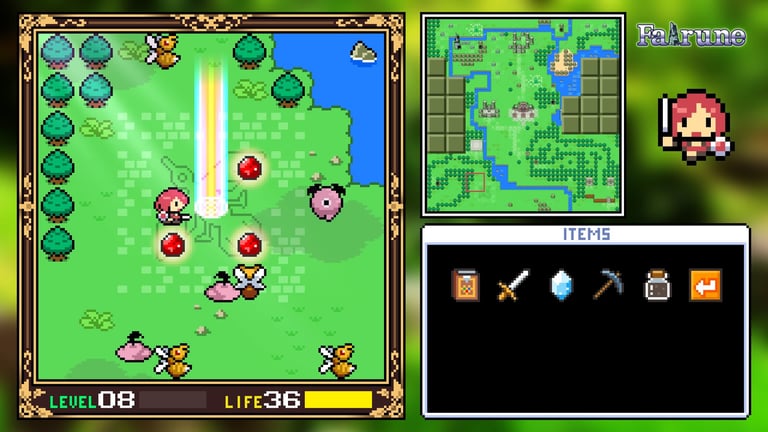

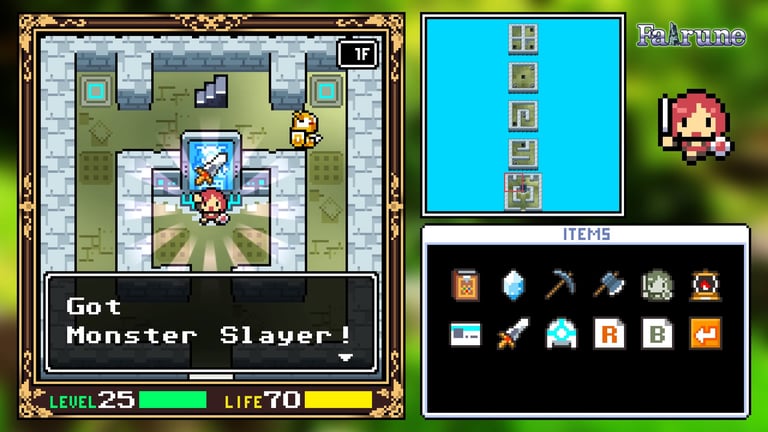

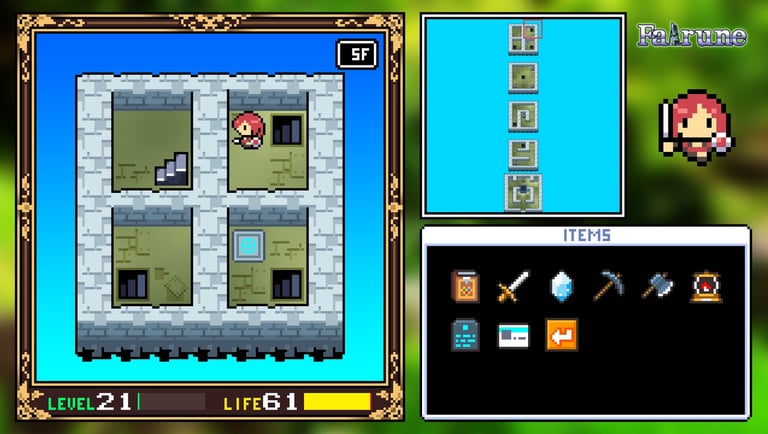

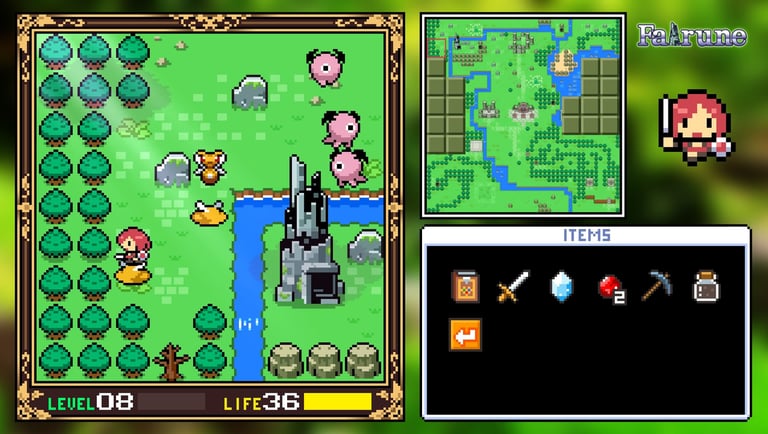

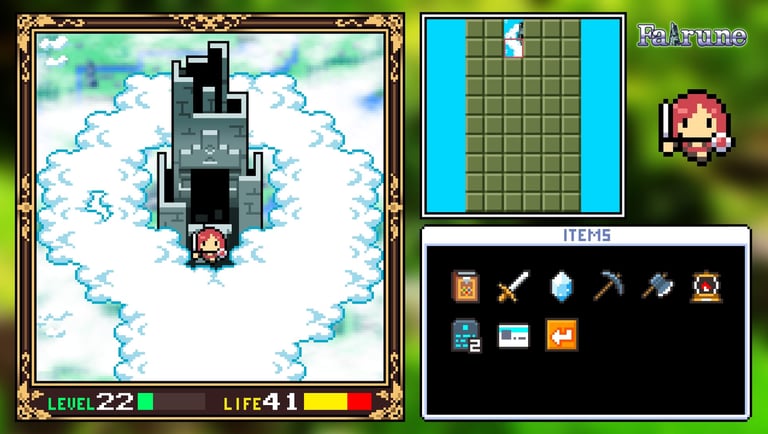

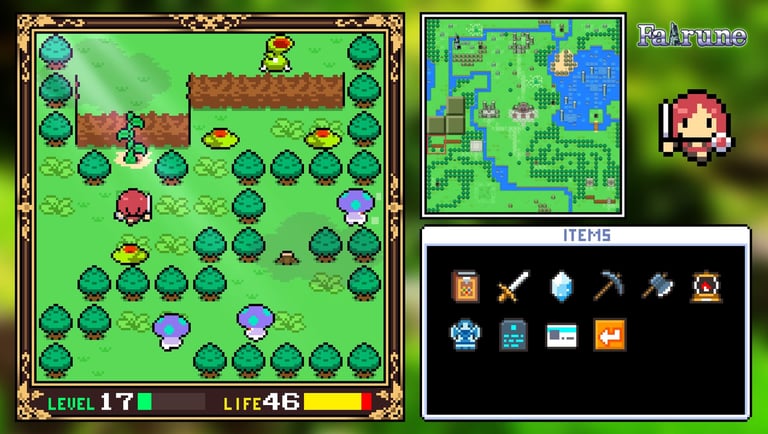



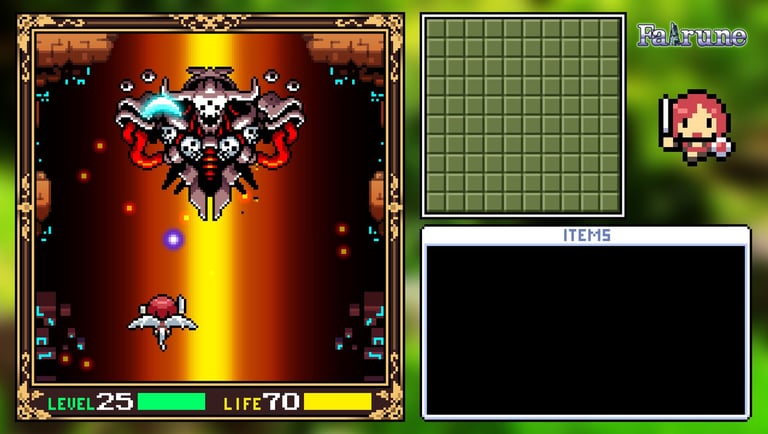

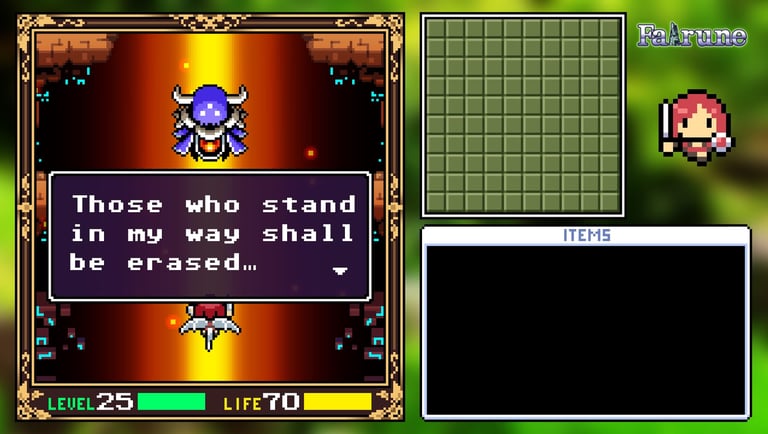

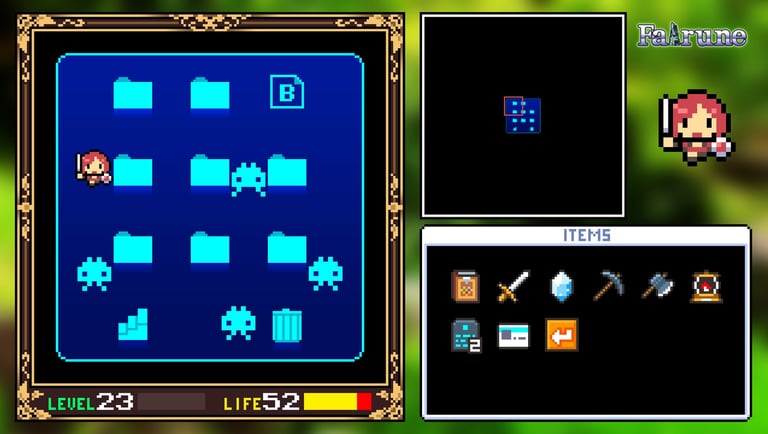

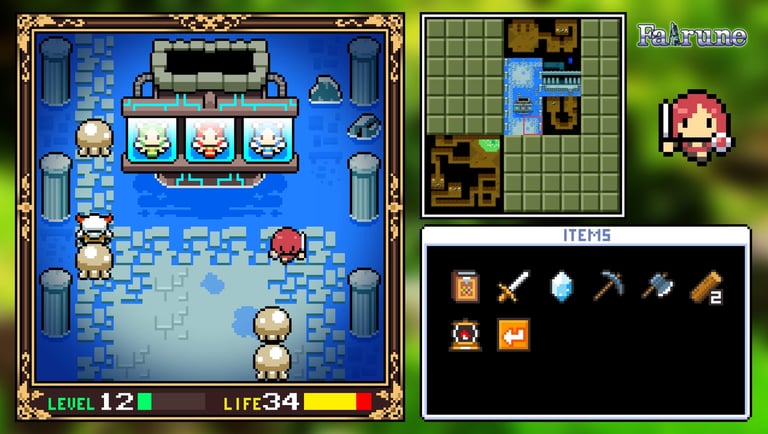

Fairune often breaks the "fourth wall," as imperfect as that analogy is for a video game, to suggest a quest more meta than real.
The three spirits...presumably contained in their computerized tomb--or womb, depending on how one interprets the story. Because, again, there's virtually no story.
The final boss is something like the Master Control Program from the movie Tron--it's intent on controlling the Fairune realm to the point of corruption. Whether a virus or simply an AI with agency, it must be slayed. Or rather, blown to bits in a series of weird, shoot 'em up sequences.

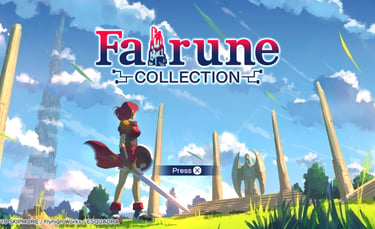
Fairune is actually part of the greater Fairune Collection, which includes its two sequels and an unlockable bonus game, Fairune Blast! The original, standalone version was available on the 3DS eShop and other platforms.
This tower is the ultimate target, featuring floor after floor of puzzles and climbing until breaching the very heavens above.
Fairune is full of items which exist, essentially, to retrieve other items, which exist to reach still other items...or some new place on the map.
Platform: PlayStation 4 (reviewed), 3DS, Nintendo Switch, Steam Publisher: Flyhigh Works Developer: Skipmore Release: 2014 (originally)
Contact: lostnostalgiaproductions@gmail.com
Website: www.lostnostalgia.com
Like what we're doing? Please consider throwing us a dollar into our Patreon page's tip jar!


